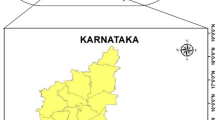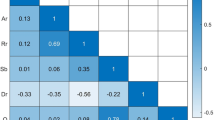Abstract
Landfill leachate is one of the sources of surface water pollution in Selangor State (SS), Malaysia. Leachate volume prediction is essential for sustainable waste management and leachate treatment processes. The accurate estimation of leachate generation rates is often considered a challenge, especially in developing countries, due to the lack of reliable data and high measurement costs. Leachate generation is related to several variable factors, including meteorological data, waste generation rates, and landfill design conditions. Large variations in these factors lead to complicated leachate modeling processes. The aims of this study are to determine the key elements contributing to leachate production and then develop an adaptive neural fuzzy inference system (ANFIS) model to predict leachate generation rates. Accuracy of the final model performance was tested and evaluated using the root mean square error (RMSE), the mean absolute error (MAE), and the correlation coefficient (R). The study results defined dumped waste quantity, rainfall level, and emanated gases as the most significant contributing factors in leachate generation. The best model structure consisted of two triangular fuzzy membership functions and a hybrid training algorithm with eight fuzzy rules. The proposed ANFIS model showed a good performance with an overall correlation coefficient of 0.952.













Similar content being viewed by others
References
Abbasi, M., Abduli, M., & Omidvar, B. (2013). Forecasting municipal solid waste generation by hybrid support vector machine and partial least square model. International Journal of Environmental Research, 7(1), 27–38.
Abdallah, M., Warith, M., Narbaitz, R., Petriu, E., & Kennedy, K. (2011). Combining fuzzy logic and neural networks in modeling landfill gas production. International Journal of Civil, Environmental, Structural, Construction and Architectural Engineering, 5(6), 559–565.
Abunama, T., Othman, F., Alslaibi, T., & Abualqumboz, M. (2017). Quantifying the generated and percolated leachate through a landfill’s lining system in Gaza strip, Palestine. Polish Journal of Environmental Studies, 26(6), 2455–2461. https://doi.org/10.15244/pjoes/73803.
Abushammala, M. F. M., Basri, N. E. A., Kadhum, A. A. H., Basri, H., El-Shafie, A. H., & Sharifah Mastura, S. A. (2014). Evaluation of methane generation rate and potential from selected landfills in Malaysia. International journal of Environmental Science and Technology, 11(2), 377–384. https://doi.org/10.1007/s13762-013-0197-0.
Agamuthu, P., & Long, K. b. (2007). Evaluation of landfill cover systems under tropical conditions. International Solid Waste Association (ISWA), 07.
Agamuthu, P., Venu Mahendra, M., & Mohd Afzanizam, M. (2011). Material flow analysis of aluminum in a dynamic system: Jeram sanitary landfill. Malaysian Journal of Science, 30(1), 16–27.
Aziz, H. A., Adlan, M. N., Amilin, K., Yusoff, M. S., Ramly, N. H., & Umar, M. (2012). Quantification of leachate generation rate from a semi-aerobic landfill in Malaysia. Environmental Engineering and Management Journal, 11(9), 1581–1585.
Bagheri, M., Bazvand, A., & Ehteshami, M. (2017). Application of artificial intelligence for the management of landfill leachate penetration into groundwater, and assessment of its environmental impacts. Journal of Cleaner Production, 149, 784–796. https://doi.org/10.1016/j.jclepro.2017.02.157.
Berger, K. U. (2015). On the current state of the hydrologic evaluation of landfill performance (HELP) model. Waste Management, 38, 201–209.
Christensen, T. H., Kjeldsen, P., Albrechtsen, H., Heron, G., Nielsen, P. H., Bjerg, P. L., & Holm, P. E. (1994). Attenuation of landfill leachate pollutants in aquifers. Critical Reviews in Environmental Science and Technology, 24(2), 119–202.
Dastorani, M. T., Moghadamnia, A., Piri, J., & Rico-Ramirez, M. (2010). Application of ANN and ANFIS models for reconstructing missing flow data. Environmental Monitoring and Assessment, 166(1–4), 421–434. https://doi.org/10.1007/s10661-009-1012-8.
El-Fadel, M., Findikakis, A. N., & Leckie, J. O. (1997). Modeling leachate generation and transport in solid waste landfills. Environmental Technology, 18(7), 669–686.
El-Shafie, A., Jaafer, O., & Seyed, A. (2011). Adaptive neuro-fuzzy inference system based model for rainfall forecasting in Klang River, Malaysia. International Journal of the Physical Sciences, 6(12), 2875–2888.
Franchignoni, F., Horak, F., & Godi, M. (2010). Using psychometric techniques to improve the balance evaluation systems test: the mini-BESTest. Journal of Rehabilitation Medicine, 42, 323–331.
Grugnaletti, M., Pantini, S., Verginelli, I., & Lombardi, F. (2016). An easy-to-use tool for the evaluation of leachate production at landfill sites. Waste Management, 55, 204–219.
Heddam, S., Bermad, A., & Dechemi, N. (2012). ANFIS-based modelling for coagulant dosage in drinking water treatment plant: a case study. Environmental Monitoring and Assessment, 184(4), 1953–1971. https://doi.org/10.1007/s10661-011-2091-x.
Jang, J. R. (1993). ANFIS : Adaptive-network-based fuzzy inference system. IEEE Transactions on Systems, Man, and Cybernetics, 23(3), 665–685. https://doi.org/10.1109/21.256541.
Karaca, F., & Özkaya, B. (2006). NN-LEAP: A neural network-based model for controlling leachate flow-rate in a municipal solid waste landfill site. Environmental Modelling & Software, 21(8), 1190–1197.
Khatibinia, M., Salajegheh, J., & Fadaee, M. (2012). Prediction of failure probability for soil-structure interaction system using modified ANFIS by hybrid of FCM-FPSO. Asian Journal Of Civil, 13(1), 1–27.
Malakahmad, A., Abualqumboz, M. S., Kutty, S. R. M., & Abunama, T. J. (2017). Assessment of carbon footprint emissions and environmental concerns of solid waste treatment and disposal techniques; case study of Malaysia. Waste Management, 70, 282–292. https://doi.org/10.1016/J.WASMAN.2017.08.044.
Min, J.-E., Kim, M., Kim, J. Y., Park, I.-S., & Park, J.-W. (2010). Leachate modeling for a municipal solid waste landfill for upper expansion. KSCE Journal of Civil Engineering, 14(4), 473–480.
Moosavi, V., Vafakhah, M., Shirmohammadi, B., & Behnia, N. (2013). A wavelet-ANFIS hybrid model for groundwater level forecasting for different prediction periods. Water Resources Management, 27(5), 1301–1321. https://doi.org/10.1007/s11269-012-0239-2.
Mrutyunjaya, S., Mahapatra, S. S., Sahu, H. B., & Patel, R. K. (2011). Prediction of water quality index using neuro fuzzy inference system. Water Quality, Exposure and Health, 3, 175–191. https://doi.org/10.1007/s12403-011-0054-7.
Nilam, T., Ibrahim, T., Mahmood, N. Z., & Othman, F. (2016). Estimation of leachate generation from MSW landfills in Selangor. Asian Journal of Microbiology, Biotechnology and Environmental Sciences, 19(1), 43–48.
Noori, R., Abdoli, M. A., Farokhnia, A., & Abbasi, M. (2009). Results uncertainty of solid waste generation forecasting by hybrid of wavelet transform-ANFIS and wavelet transform-neural network. Expert Systems with Applications, 63(6), 461. https://doi.org/10.1016/j.eswa.2016.08.001.
Pantini, S., Verginelli, I., & Lombardi, F. (2014). A new screening model for leachate production assessment at landfill sites. International journal of Environmental Science and Technology, 11(6), 1503–1516. https://doi.org/10.1007/s13762-013-0344-7.
Pramanik, N., & Panda, R. (2009). Application of neural network and adaptive neuro-fuzzy inference systems for river flow prediction. Hydrological Sciences Journal, 54(2), 247–260.
Ramzan, S., Zahid, F., & Ramzan, S. (2013). Evaluating multivariate normality: a graphical approach. Middle East Journal of Scientific Research, 13(2), 254–263.
Saheri, S., Mir, M., & Basri, N. (2012). Life cycle assessment for solid waste disposal options in Malaysia. Polish Journal of Environmental Studies, 21(5), 1377–1382.
Schroeder, P. R., & Ammon, D. C. (1994). The hydrologic evaluation of landfill performance (HELP) model: user’s guide for version 3. US Environmental Protection Agency.
Tan, S. T., Hashim, H., Lim, J. S., Ho, W. S., Lee, C. T., & Yan, J. (2014). Energy and emissions benefits of renewable energy derived from municipal solid waste: analysis of a low carbon scenario in Malaysia. Applied Energy, 136, 797–804. https://doi.org/10.1016/j.apenergy.2014.06.003.
Tarmudi, Z., Abdullah, M., Tap, M., & Osman, A. (2009). An overview of municipal solid wastes generation in Malaysia. Universiti Teknologi Malaysia, 51, 1–15.
Tiew, K.-G., Ahmad Basri, N. E., Watanabe, K., Abushammala, M. F. M., & Bin Ibrahim, M. T. (2015). Assessment of the sustainability level of community waste recycling program in Malaysia. Journal of Material Cycles and Waste Management, 17(3), 598–605. https://doi.org/10.1007/s10163-014-0273-7.
Yahaya, N., Lim, C., Taha, M., & Pereira, J. (2016). Exposure of municipal solid waste disposal sites to climate related geohazards: case study of Selangor. Bulletin of the Geological Society of Malaysia, 62, 57–63.
Yang, N., Damgaard, A., Kjeldsen, P., Shao, L.-M., & He, P.-J. (2015). Quantification of regional leachate variance from municipal solid waste landfills in China. Waste Management, 46, 362–372.
Ying, H. (1998). General SISO Takagi-Sugeno fuzzy systems with linear rule consequent are universal approximators. IEEE Transactions on Fuzzy Systems, 6(4), 582–587.
Younes, M., Nopiah, Z., Basri, N., Basri, H., Abushammala, M., & Maulud, K. (2015). Solid waste forecasting using modified ANFIS modeling. Journal of the Air & Waste Management Association, 65(10), 1229–1238. https://doi.org/10.1080/10962247.2015.1075919.
Younes, M., Nopiah, Z., Basri, N., Basri, H., Abushammala, M., & Maulud, K. (2016). Landfill area estimation based on integrated waste disposal options and solid waste forecasting using modified ANFIS model. Waste Management, 55, 3–11. https://doi.org/10.1016/j.wasman.2015.10.020.
Zhang, W., Zhang, G., & Chen, Y. (2013). Analyses on a high leachate mound in a landfill of municipal solid waste in China. Environmental Earth Sciences, 70(4), 1747–1752.
Acknowledgments
The authors would like to acknowledge the University of Malaya Research Grant (FL001-13SUS, RP017C-15SUS) and the Ministry of Higher Education Fundamental Research Grant (FP016-2014A) for the financial support. We would also like to thank the Malaysian Meteorological Department and other related authorities and companies, as well as the UM Water Research Center, for the support rendered. We are most grateful and would like to thank the reviewers for their valuable suggestions, which have led to substantial improvements of the article.
Funding
Financial support was provided by the University of Malaya Research Grant (FL001-13SUS, RP017C-15SUS) and the Ministry of Higher Education Fundamental Research Grant (FP016-2014A).
Author information
Authors and Affiliations
Corresponding author
Rights and permissions
About this article
Cite this article
Abunama, T., Othman, F. & Younes, M.K. Predicting sanitary landfill leachate generation in humid regions using ANFIS modeling. Environ Monit Assess 190, 597 (2018). https://doi.org/10.1007/s10661-018-6966-y
Received:
Accepted:
Published:
DOI: https://doi.org/10.1007/s10661-018-6966-y




